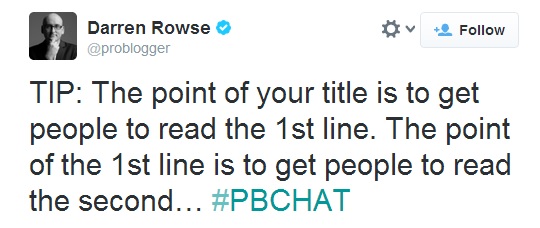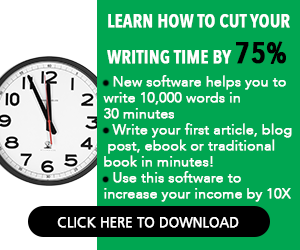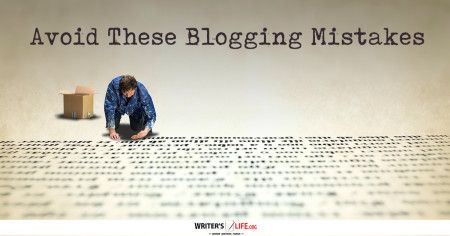- How To Tackle Jealousy In Creative Writing
- Common Submission Mistakes
- How To Stop Your Blog Becoming Boring
- The One Thing Every Successful Writer Has In Common
- How To Make Yourself Aware Of Publishing Scams
- Why Almost ALL Writers Make These Grammar Mistakes At Some Point
- 5 Tips For Authors On How To Deal With Rejection
- Top Mistakes to Avoid When Writing a Novel
- How to Avoid Common New Writer Mistakes
- 10 Mistakes New Fiction Writers Make
Use Subheads to Keep Readers Hooked On Your Writing

Share, Pin or Retweet If You Love Writing.
The best tool you have in your arsenal is something that far too many bloggers overlook.
The subhead.
That’s right – the often overlooked subhead is really a stealthy and lethal ninja writing weapon just sitting there quietly waiting to be put to good use.
Unfortunately, most writers don’t know how to use them properly.
Let’s do a quick refresher and deconstruct the word.
The name sub (under) head (headline) literally means a headline under the main headline.
And what do headlines do?
They hook, they entertain, they shock, and, above all, they create curiosity. They pull readers further into your epic content so they stay with you long enough to realize that it is, in fact, stellar writing.
What the headline does for the post, the subhead does for each individual subsection of copy.
3 Subhead Blunders That Make Readers Bounce
Too many writers just throw away their subheads. Let’s take a look at the three most common blunders that cause subheads to fall flat.
1. The Plain Label Subhead
A lot of bloggers use subheads merely as a label. Labels are used to identify, not to pique interest.
Plain Label Subheads are boring and they don’t stop readers from scanning. They make them yawn. Not exactly the response you’re looking for.
If, for example, you’re writing a subhead above text that’s about why headlines are important and your subhead is Why Headlines Are Important, you’re using it as a label. It’s lifeless, boring, and does nothing to keep your readers engaged with your writing.
Instead, something like The Simple Secret to Hooking Your Readers would be more on track. Then let the text that follows explain the importance of great headlines.
2. The Spoiler Subhead
Spoiler Subheads tell readers exactly what’s coming in the text that follows the subhead. Talk about playing right into the scanners’ hands! If you want to keep readers on your posts longer, don’t give them a free pass to skip paragraphs. Tease them with the subhead.
Keeping with our example of headlines, if you’ve written a block of text in which your point is that the number-one priority of a headline is to create curiosity, don’t precede it with a subhead that reads Use Headlines to Create Curiosity.
That’s a big old spoiler that gives away your upcoming point. And if they know the point you’re about to make, why should they read it?
A subhead that reads The One Thing Every Great Headline Has in Common would be a much better place to start. Then use the text below it to explain how curiosity is that one thing.
3. The Cryptic Subhead.
The other side of the subhead blunder coin is trying so hard to be creative and grab attention that you create something that is more confusing than compelling. These cryptic subheads can be a turnoff and lead to a bounce just as easily as the other two mistakes.
Your subhead should be a phrase that is crystal clear, but makes readers say, “I have to keep reading to see what this writer’s getting at.” If instead, it makes them say, “What the hell does that phrase mean?” – you’re flirting with being too cryptic.
Again, consider our example topic of headlines. If you’re making the point that a headline acts as a lure, enticing readers into the body of the post, you might make an analogy with fishing and using bait to hook your readers. But out of context, a subhead which reads Don’t Forget the Worm! won’t make a whole lot of sense.
Therefore, it confuses rather than compels and misses the mark completely. Readers don’t want to solve puzzles. They want to learn.
If, instead you used one that reads The Most Powerful Way to Get More Clicks, you’re in the ballpark. You’re making the same point, but the phrasing pulls readers further into your post instead of frustrating them to the point of clicking away.
You need to treat your subheads as another opportunity to stand out, to grab your readers’ attention, and keep them on your site long enough to transform them into fans.
The Four Ingredients Of Killer Subheads
If you haven’t bounced and you’ve come this far, I figure I’ve hooked you, so I’m going to press my luck.
Did you see what I did in those three examples of stellar subheads? You may want to go back and look. Under each example, I’ve bolded several words. They’re the four key ingredients of compelling subheads.
If you don’t feel like going back up there, here they are:
- Curiosity
- Surprise
- Personality
- Emotion
Every good subhead should, at the very least, create curiosity for readers and compel them to continue reading. The truly great subheads usually have at least one or more of those other qualities too.
Thinking of getting a career as a full-time writer. If so you might find The Get Paid to Write course CLICK HERE! that Writers Life offers to be invaluable as it will teach you how to become a skilled, sought-after scribe who makes a great living.
How Do Your Subheads Measure Up?
Go take a look at your most recent posts. Take some time to evaluate the subheads and honestly ask yourself if they would make a scanner stop and take notice.
Do you use subheads to break up long blocks of text? Are you creating curiosity and coaxing readers along by injecting surprise, personality, or emotion?
Or are many of your subheads just labels? Are they spoilers that give away what’s coming next? Even worse – are they so cryptic that they befuddle and confuse your readers?
Make sure you treat your subheads with as much TLC as you’ve become accustomed to giving your headlines and you’ll be on the right track.
5 Simple Steps to Supercharged Subheads
When you’re writing your next post, follow these five simple steps to craft subheads that hook your readers and keep their eyes on your post:
- Write the post as you normally do. Don’t worry about changing anything up just yet.
- When your draft is done, go back and look at your subheads in a different light. In your mind, isolate each subhead and the text that follows it. Think of that block of text as a short, all-inclusive post.
- Ask yourself what the purpose of that singular block of text is. What point are you trying to get across?
- If that portion of text were a blog post unto itself, ask yourself what would its headline be?
- Make sure your subhead creates curiosity – and then try to work in surprise, personality, and emotion whenever possible.
Are You Ready To Declare War On The Scanners?
If you owned a Lamborghini, would you take that bad-boy out for a spin – or leave it in the garage under a tarp?
Then you can’t very well leave this ridiculously powerful tool under some old dusty tarp, can you?
Whatever your blogging endgame is, its success hinges on your content being found (and loved) by throngs of new readers.
You know all too well the work that goes into getting a new visitor to your blog. Think about all the time and all the effort you’ve devoted to writing great content. Think about all the time and effort necessary to promote your work and get readers to give it a chance.
Then ask yourself if that was really time well spent if the people who do give your content a chance only scan your content for 10 to 20 seconds before they bounce.
Now you can make them stick!
Now you have a simple but powerful solution in your arsenal. Killer subheads will hook those scanners again and again – keeping them on the page long enough to discover once and for all that you are a writer worth paying attention to.
Go revisit your most recent content. Take a hard look at your subheads and be brutally honest with yourself.
If you’ve been throwing them away, stop it.
This post has given you all the information you need to write compelling subheads that magnetically pull readers from section to section of your posts.
Put it to use and watch your bounce rate plummet.
If you have the need to feel inspired, in control and more organized than you might want to try The Get It Done, Writer's Tookit CLICK HERE!, which is an ebook/audio CD combo set that teaches writers how to become more disciplined and how to find the time to write.
The full version of this article by Gary Korisko can be found with the title The Ultimate Guide to Writing Irresistaible Subheads.





















